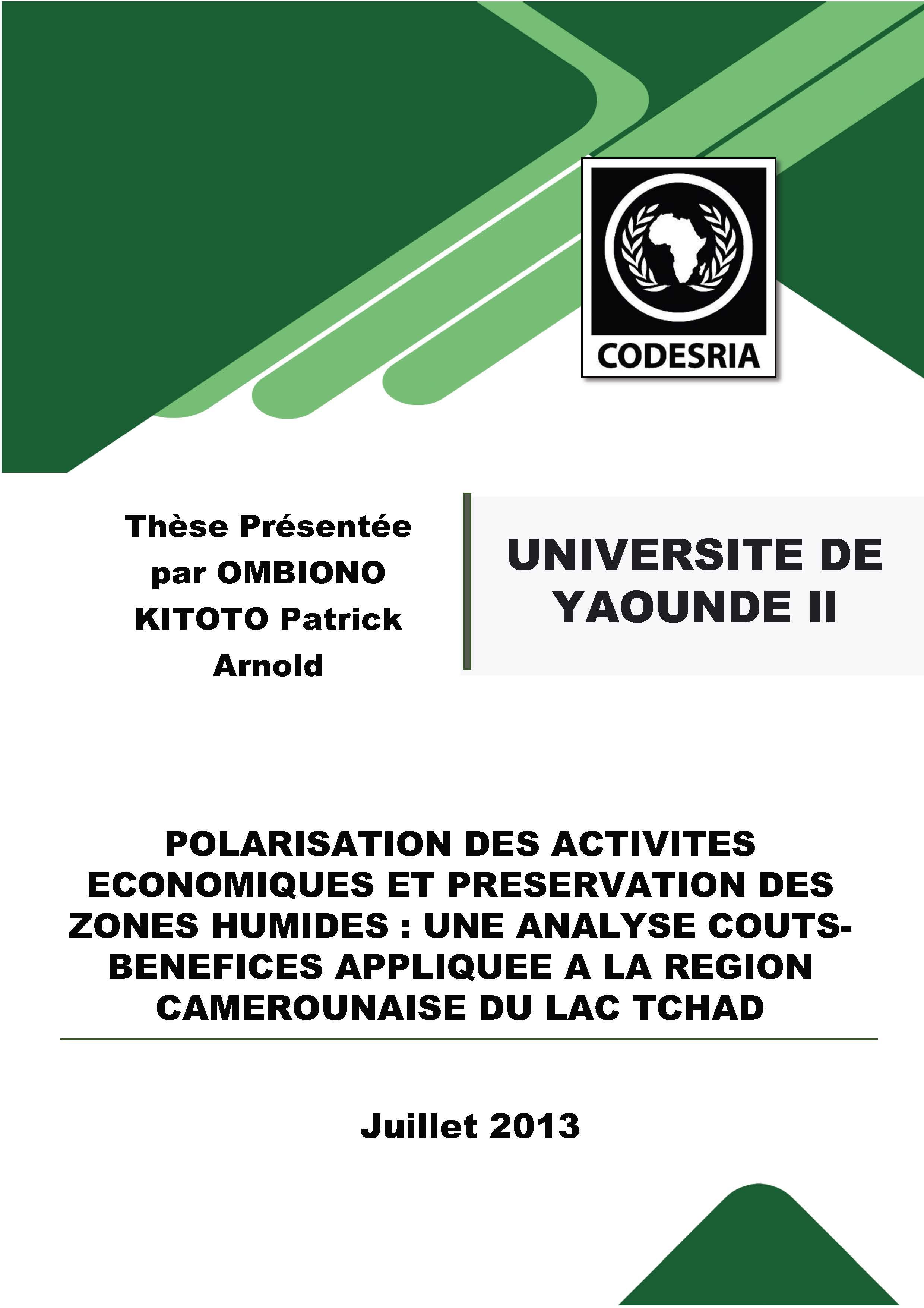POLARISATION DES ACTIVITES ECONOMIQUES ET PRESERVATION DES ZONES HUMIDES: UNE ANALYSE COUTSBENEFICES APPLIQUEE A LA REGION CAMEROUNAISE DU LAC TCHAD
Keywords:
Wetlands, Lake Chad, Cost-benefit analysis, Contingent valuation methodSynopsis
The disappearance of 90% of Lake Chad surface has brought riparian states to elaborate a restoration project of this natural asset. However, like most collective projects of interest elsewhere, the restoration of Lake Chad would procure gains to some and impose costs on others, mainly on farmers. We propose in this thesis to compare the benefits and costs (as perceived by farmers) associated to the realization of this project, in order to clarify the terms of the choice between conservation of the wetlands of the Lake Chad and their conversion to agricultural use. In particular, this study aims to understand the bases of the economic activities polarisation in this natural area, as well as to estimate the monetary value of benefits and costs that can be generated by realisation of such a project. The methodological approach used data from the contingent valuation survey conducted in 2011 in the Cameroonian part of the Lake Chad and appropriate statistical and econometric procedures.
Firstly, we show that productive potentialities of wetlands explain the polarisation of agricultural activities around the Lake Chad. Then, we find out that benefits from the realisation of the project can be estimated at 4,336,511,340 CFA francs. Lastly, we evaluate the costs generated by the implementation of such a project to 24,863,888,896 CFA francs. With benefits representing 17.44% of costs, it could be concluded that the proposed restoration of Lake Chad is not profitable from the point of view of the advantages accruing. However, this conclusion must be moderate considering the negative externalities generated by the agricultural activities. Otherwise, our survey shows that the Lake Chad is considered by residents like an important natural asset. At least 70% of respondents are in favor of the restoration project. Finally, rather than oppose the restoration of Lake Chad to the agricultural use of its banks, it is important to find equilibrium between these both objectives.
Downloads
References
Essombè Edimo J.R. Nya Bonabébé (2007a), « Localisation périphérique des entreprises industrielles et création de nouvelles centralités à Douala », in Revue « Mondes en Développement », n° 137, vol. 2007/35
Essombè Edimo J.R. Nya Bonabébé (2007b), « Spatialité et développement économique à Douala : entre le hasard et la nécessité », L’harmattan, Paris.
FAO (2006), « L’état de l’insécurité alimentaire dans le monde : Eradiquer la faim dans le monde Ŕ bilan 10 ans après le Sommet mondial de l’alimentation », FAO.
FAO (2009), « Lac Tchad ou la catastrophe humanitaire : l’assèchement du lac Tchad menace les moyens d’existence des riverains ». http://www.fao.org
Faucheux S., Noël J.F. (1995), « Economie des Ressources Naturelles et de l’Environnement », Armand Colin, Paris.
Favreau G. et al. (2005), « Impacts climatiques et anthropiques sur le fonctionnement hydrologique dans le bassin du lac Tchad ». Communication au premier colloque de restitution scientifique du projet Ecosphère continentale, Toulouse, 5-7 décembre 2005.
Feuillette S. (2001), « Vers une gestion de la demande sur une nappe en accès libre : exploration des interactions ressource usages par les systèmes multi-agents : Application à la nappe de Kairouan, Tunisie Centrale », Thèse de Doctorat en Sciences de l’Eau, Université de Montpellier II.
Fujita M., Thisse J.-F. (1997), « Economie Géographique; problèmes anciens et perspectives nouvelles », Anales d’économie et de statistique, 45: 37-87.
Fustec E., Lefeuve J.C. (2000), « Fonctions et valeurs des zones humides », Dunod, Paris.
Gauthier C. (1997), « Evaluation économique des ressources naturelles, le cas particulier de la biodiversité : Application de la méthode contingente au site des forêts de la Garonne », Thèse de Doctorat en sciences économiques, Toulouse.






